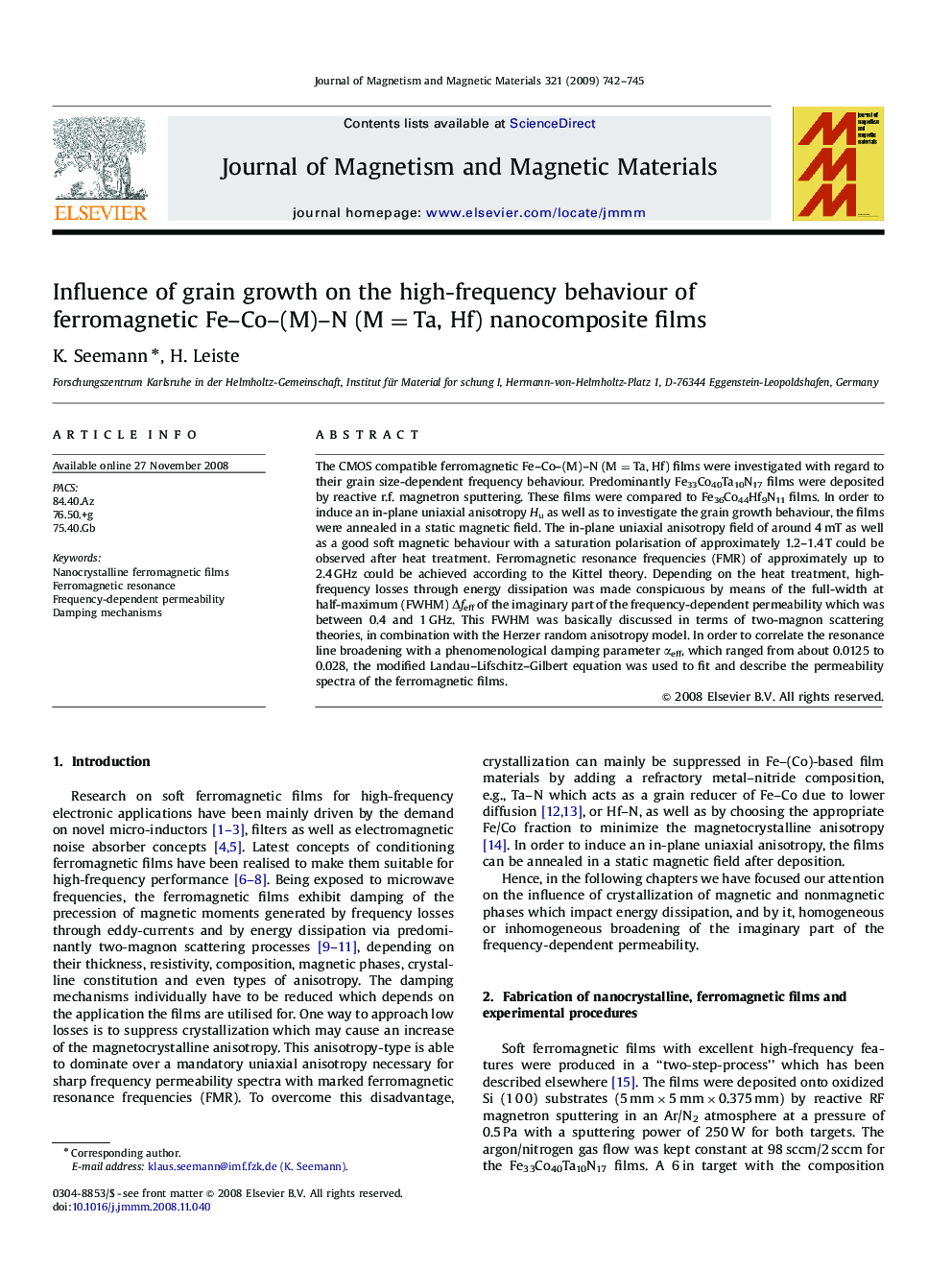| Article ID | Journal | Published Year | Pages | File Type |
|---|---|---|---|---|
| 1802804 | Journal of Magnetism and Magnetic Materials | 2009 | 4 Pages |
The CMOS compatible ferromagnetic Fe–Co–(M)–N (M=Ta, Hf) films were investigated with regard to their grain size-dependent frequency behaviour. Predominantly Fe33Co40Ta10N17 films were deposited by reactive r.f. magnetron sputtering. These films were compared to Fe36Co44Hf9N11 films. In order to induce an in-plane uniaxial anisotropy Hu as well as to investigate the grain growth behaviour, the films were annealed in a static magnetic field. The in-plane uniaxial anisotropy field of around 4 mT as well as a good soft magnetic behaviour with a saturation polarisation of approximately 1.2–1.4 T could be observed after heat treatment. Ferromagnetic resonance frequencies (FMR) of approximately up to 2.4 GHz could be achieved according to the Kittel theory. Depending on the heat treatment, high-frequency losses through energy dissipation was made conspicuous by means of the full-width at half-maximum (FWHM) Δfeff of the imaginary part of the frequency-dependent permeability which was between 0.4 and 1 GHz. This FWHM was basically discussed in terms of two-magnon scattering theories, in combination with the Herzer random anisotropy model. In order to correlate the resonance line broadening with a phenomenological damping parameter αeff, which ranged from about 0.0125 to 0.028, the modified Landau–Lifschitz–Gilbert equation was used to fit and describe the permeability spectra of the ferromagnetic films.
